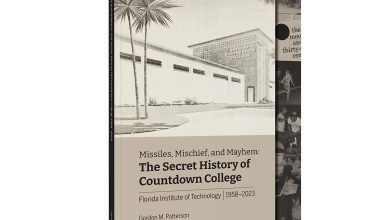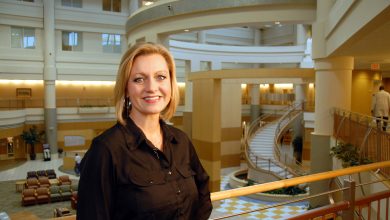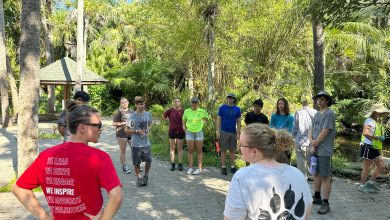Spending the Summer with the Who’s-Who in Communication on the Space Coast
By Monica DeFelice, Ms in Global Strategic Communication
When I signed up for this course, all I knew was that our class was going to be doing exciting things. Little did I know this meant working with Florida Today and visiting Kennedy Space Center, and that is only scratching the surface.
Our class assignment was to investigate the effects of space travel on the human body. I had a little bit of a background in human anatomy and physiology, but not very much knowledge about NASA and the space program. I had to quickly learn as much as I could about aerospace technology.
My group of three team members was assigned to cover the effects of space travel on the immune system and also the effects of radiation exposure on the human body. This required pouring through online articles and learning to glean information from journal articles. I found a NASA funded research study that indicated dietary supplements could help block some radiation absorption. I wanted to explore the use of dietary supplements a bit further.
Our class combined forces with Mara Bellaby, Todd Halvorson and Caroline Perez of Florida Today to help spread our news. Todd, a veteran aerospace reporter, shared his experiences on news coverage for the space program. He provided tips to conduct research, where to find news sources, and who is a great news source. He was a mentor for our class. Caroline, a video journalist, provided us with tips on how to shoot a great video clip and how to conduct an interview. She gave examples of on-the-job experiences and tips for on-site video recording.
We interviewed Capt. Winston Scott, a retired astronaut, veteran of two shuttle missions. He did not take dietary supplements. He did have shuttle panels to mitigate radiation exposure. He also had gold on his space helmet visor for radiation protection.
Our class visited Kennedy Space Center to interview ISS astronaut Chris Cassidy. I asked Chris about dietary supplements. He uses an everyday multivitamin, including Vitamin D. It was great to see him practice what I had read in the NASA study.
We met Bob Cabana, Director of KSC. He enthusiastically spoke about the NASA program and his days as an astronaut. He stated that his shuttle had panels to mitigate radiation exposure and that he did not take dietary supplements. He had a device in the pocket of his space suit, a dosimeter that measured radiation exposure.
In the Vehicle Assembly Building, we took photos of the crawler and models of rockets launched into space. Aerospace engineers enthusiastically explained how they worked.
We had to learn how to use Twitter and Facebook to post about our project and research. Learning how to use Twitter was a learning curve, but after a few tweets, I got the hang of it.
It was a challenge to take what I had learned and to reapply it to an article that a general audience could understand. I had no prior knowledge of aerospace or radiation exposure. I had to interpret jargon to catch audience attention.
Taking this class, I learned how to interpret technical jargon into language for a wider audience. I learned how to write clear and concise news articles to capture audience attention. I discovered working together as a team, we can accomplish great things and learn from each other. We can offer fellow classmates new angles to research topics or to develop writing styles.
After working on this project, I have found a new interest in following space related news. It is the final frontier and I learned that I should explore it much more.





